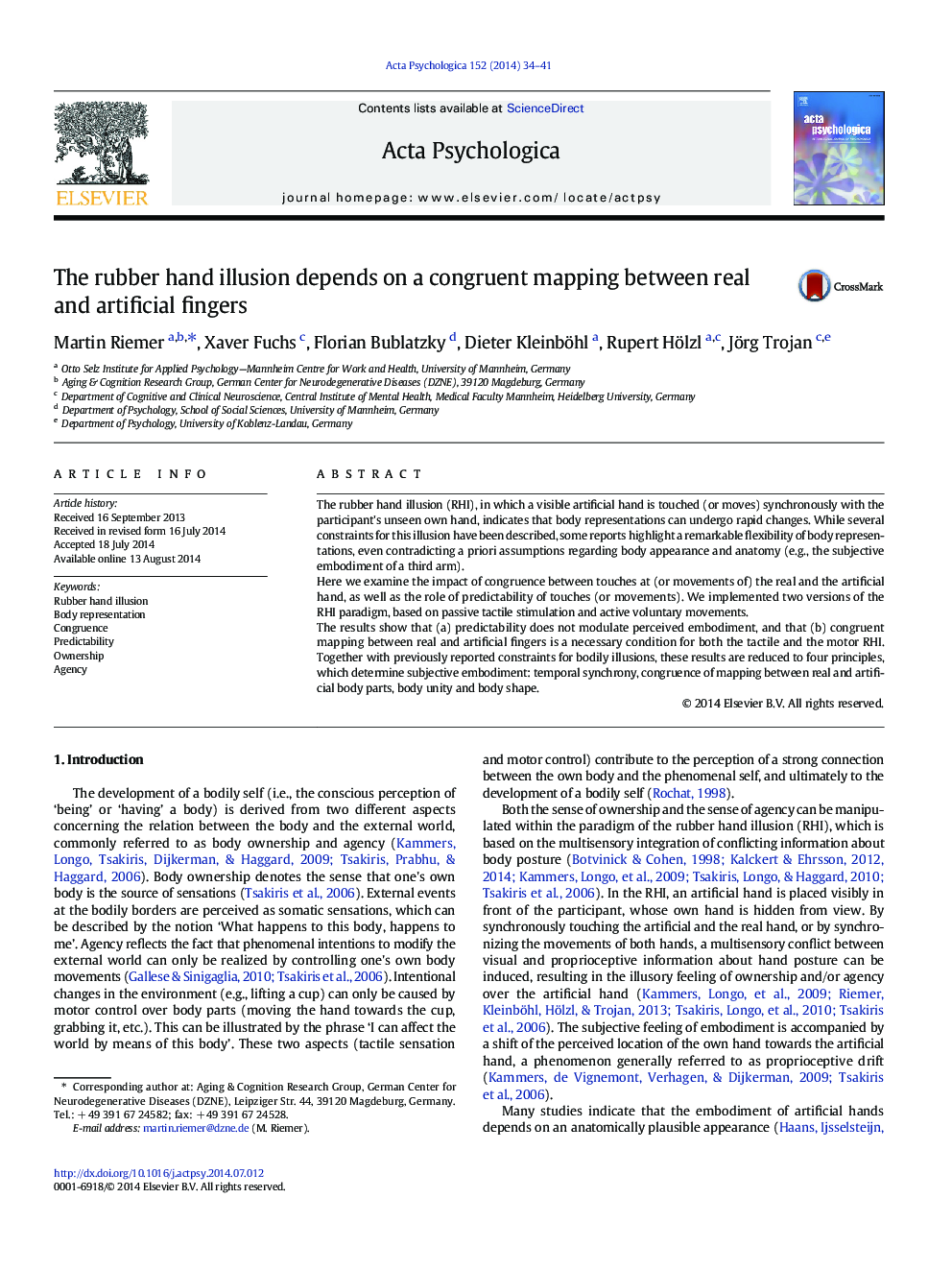| Article ID | Journal | Published Year | Pages | File Type |
|---|---|---|---|---|
| 919783 | Acta Psychologica | 2014 | 8 Pages |
•Incongruent mapping between real and artificial fingers within the motor RHI.•Application of a new method to modulate predictability of movements/touches.•Congruent mapping between fingers is important, predictability is not.•Deduction of four basic principles for successful embodiment.
The rubber hand illusion (RHI), in which a visible artificial hand is touched (or moves) synchronously with the participant's unseen own hand, indicates that body representations can undergo rapid changes. While several constraints for this illusion have been described, some reports highlight a remarkable flexibility of body representations, even contradicting a priori assumptions regarding body appearance and anatomy (e.g., the subjective embodiment of a third arm).Here we examine the impact of congruence between touches at (or movements of) the real and the artificial hand, as well as the role of predictability of touches (or movements). We implemented two versions of the RHI paradigm, based on passive tactile stimulation and active voluntary movements.The results show that (a) predictability does not modulate perceived embodiment, and that (b) congruent mapping between real and artificial fingers is a necessary condition for both the tactile and the motor RHI. Together with previously reported constraints for bodily illusions, these results are reduced to four principles, which determine subjective embodiment: temporal synchrony, congruence of mapping between real and artificial body parts, body unity and body shape.
